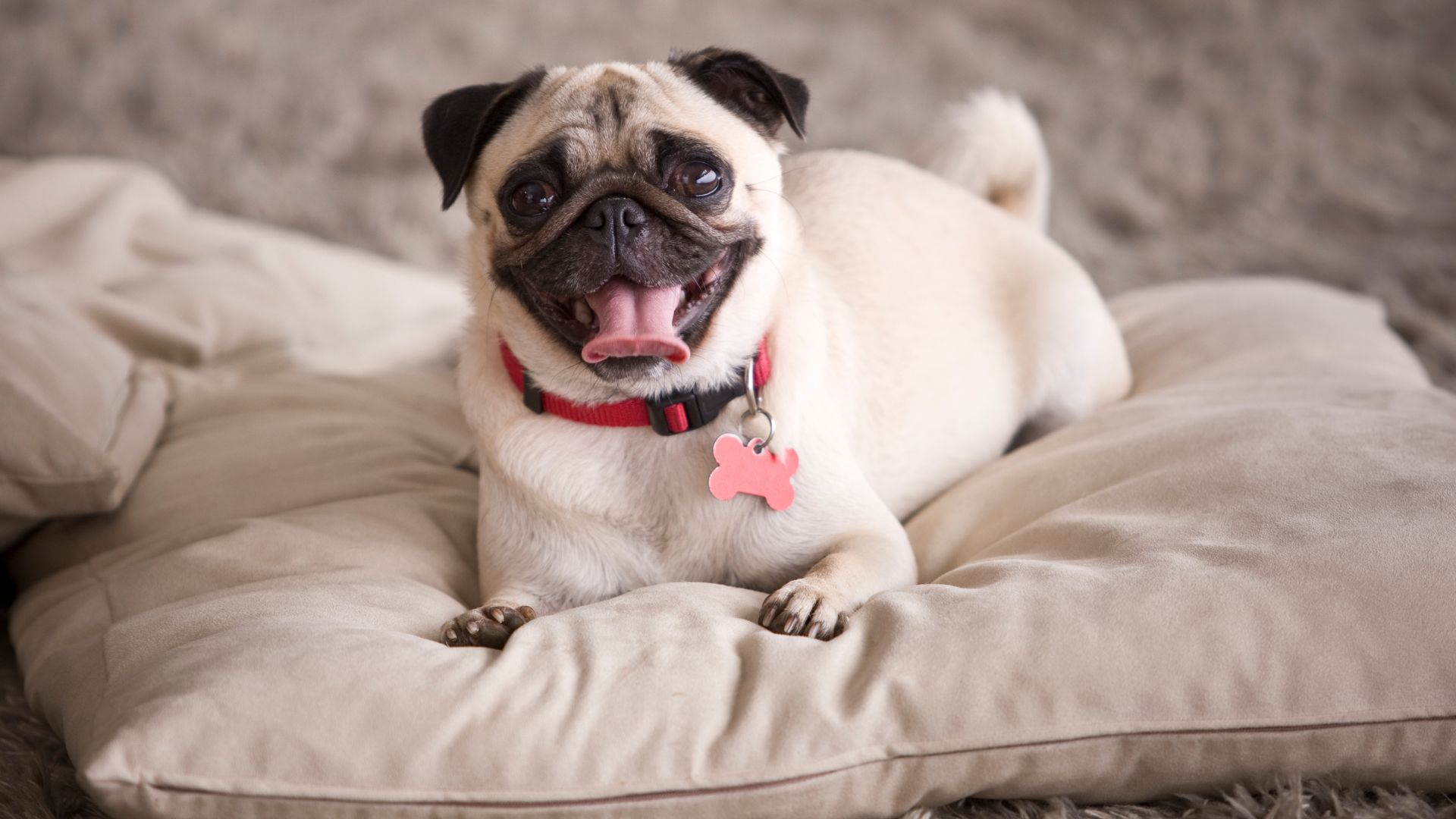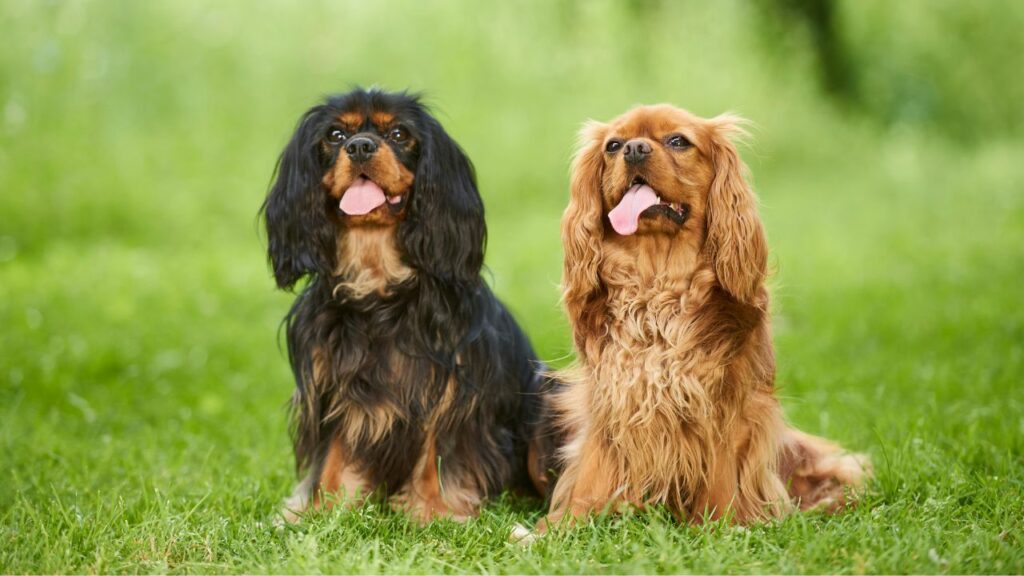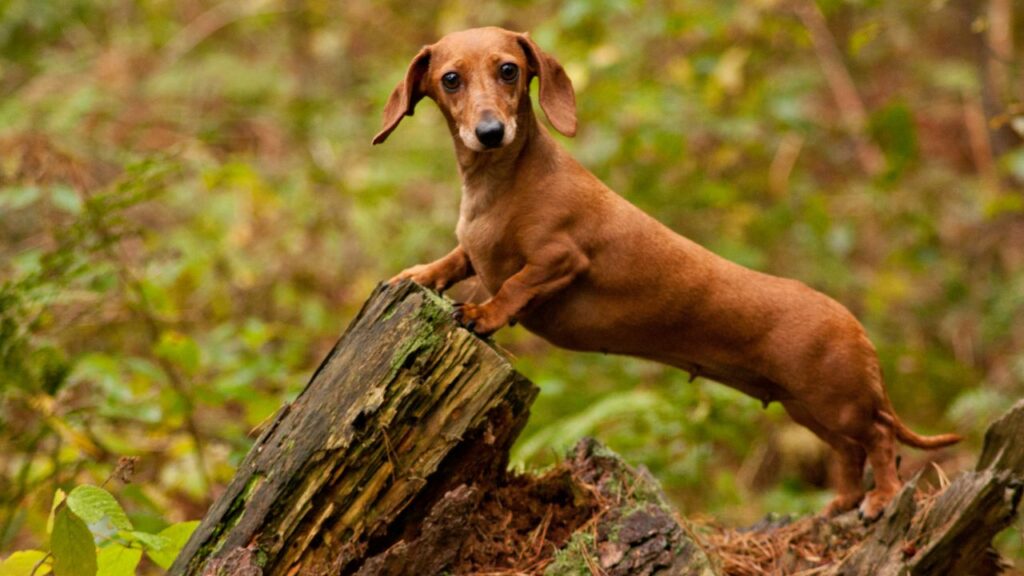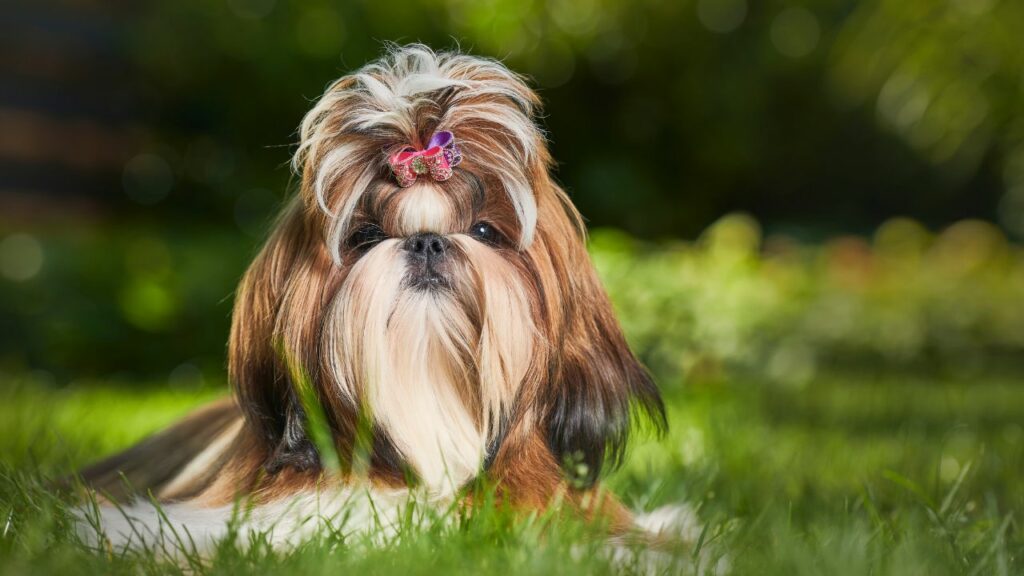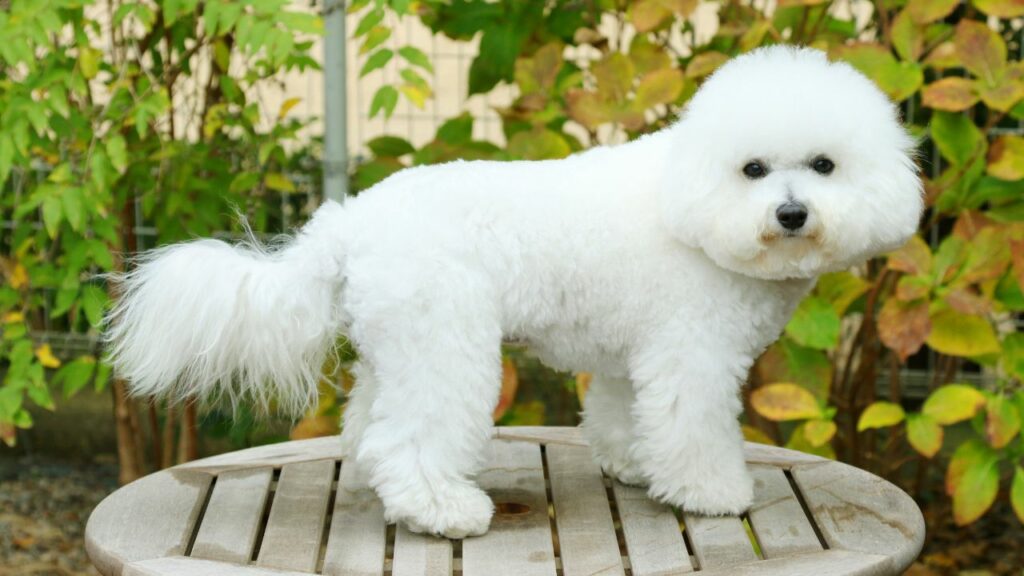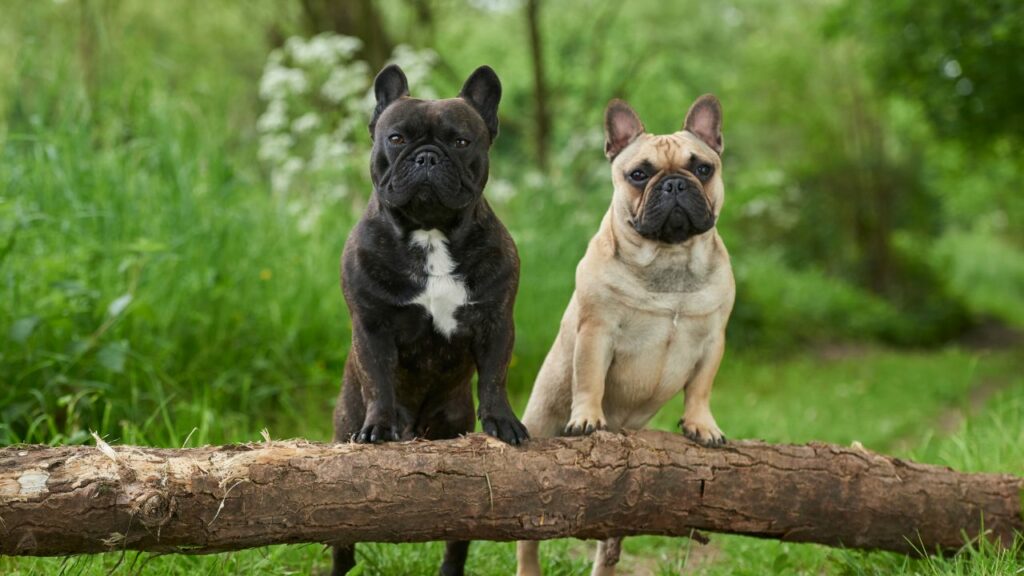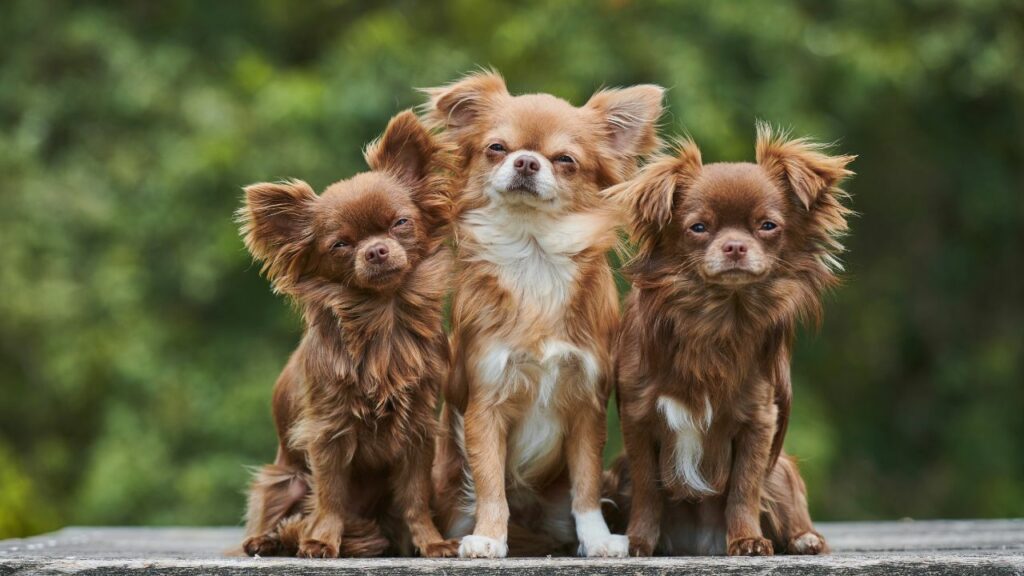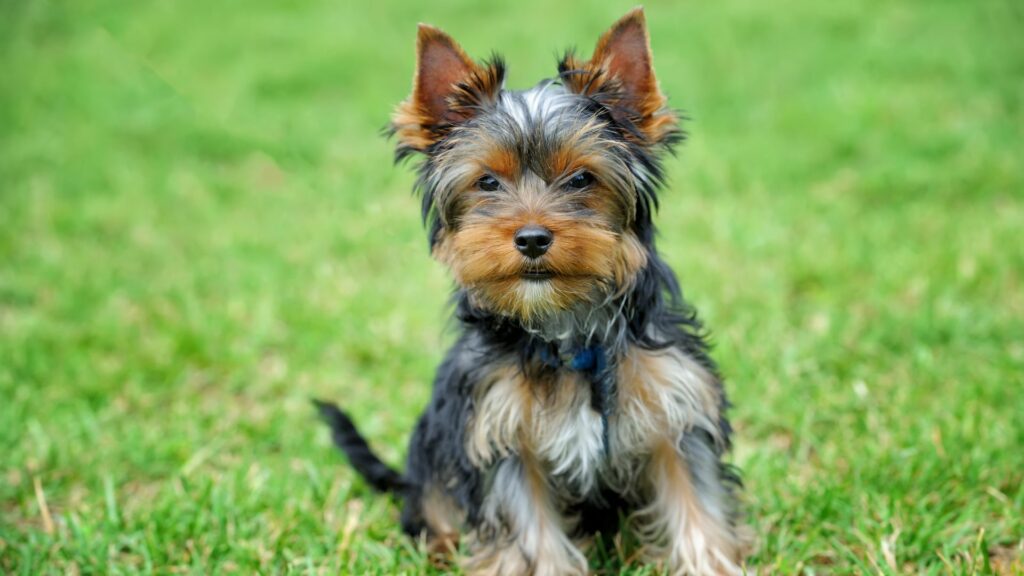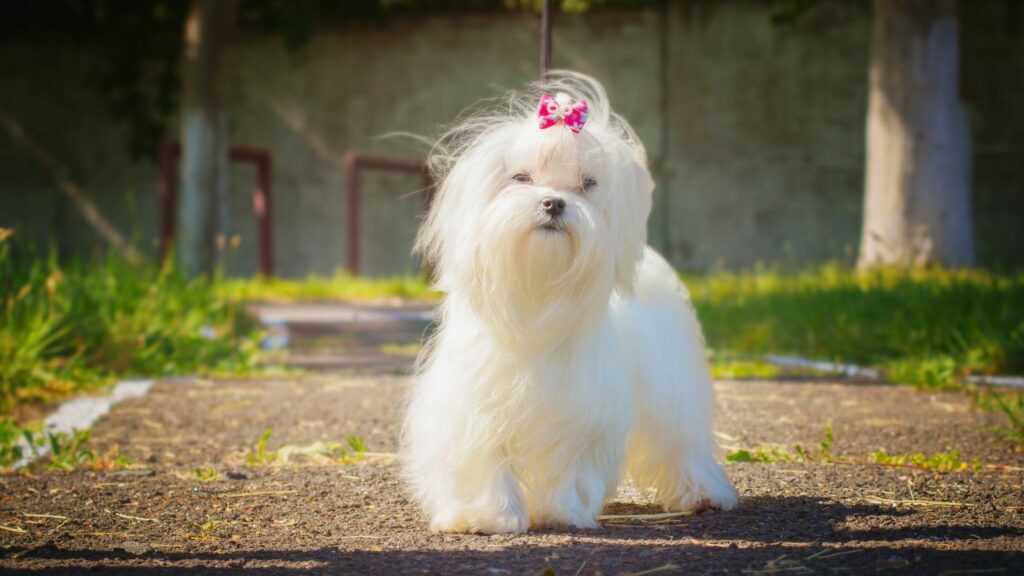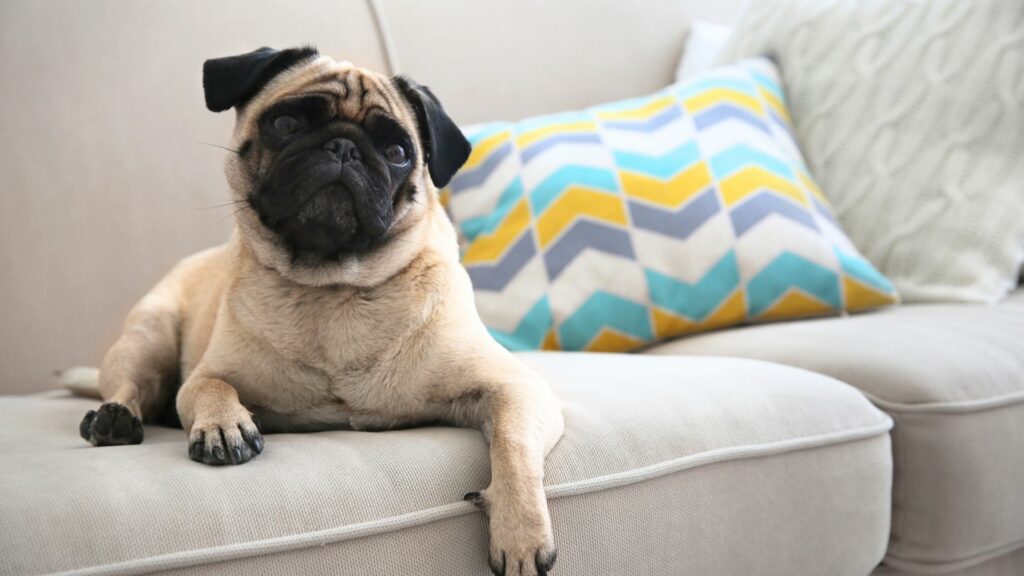Cramped apartment? Rainy season blues? Don’t let limited space curtail your canine companionship dreams! Many breeds thrive in indoor environments, happily trading sprawling fields for cozy couches. Whether you’re seeking a cuddly lapdog or a playful but compact companion, this list of 9 dog breeds will help you discover the perfect furry friend to share your indoor sanctuary. From low-shedding elegance to energetic apartment agility, there’s an ideal indoor breed waiting to enrich your life.
Adopting a dog is a big decision, especially if you’re looking for one that will primarily live indoors. It’s important to choose a breed that can comfortably adapt to smaller spaces. While some dogs need lots of room to run and play, others are perfectly content in more confined areas. Make sure your home has space for essentials like a dog bed, toys, and a quiet spot for your dog to relax. Even indoor-friendly breeds still need daily exercise to stay happy and healthy, so regular walks and playtime are a must.
Keep in mind that some dogs can be noisy, and frequent barking might not go over well in an apartment or a building with thin walls. That’s why it’s a good idea to choose a calm, quiet breed. Also, dogs need both mental and physical stimulation to avoid boredom and destructive behaviors, even if they spend most of their time indoors.
Living in a small space doesn’t mean you can’t enjoy the companionship of a dog—there are plenty of breeds that thrive indoors. Here are nine of the best dogs for indoor living, perfect for apartment dwellers or those with limited space.
Dog Breeds That Thrive Indoors
1. Cavalier King Charles Spaniel
The Cavalier King Charles Spaniel is a sweet, affectionate, and playful dog that makes an excellent companion for families or individuals. These dogs are known for their loving nature and thrive on interacting with their owners, making them wonderful indoor pets. Cavaliers are great with children and love to cuddle, often being described as the perfect lap dog.
As a toy breed with a single coat of fur, Cavaliers aren’t suited for long periods outdoors, especially in cold weather. They prefer the comfort of being indoors, only needing designated playtime outside. While they may greet visitors with enthusiasm, they generally aren’t protective dogs.
According to Hill’s Pet, caring for a Cavalier’s coat is simple, requiring regular grooming to keep it looking healthy and shiny. A weekly brushing, occasional baths, and some professional trimming will keep them looking their best. Though they shed lightly during certain seasons, it’s usually not a big concern.
2. Dachshund
Dachshunds are lively, intelligent dogs with a keen sense of smell, making them curious and playful companions. These small, low-riding dogs are best suited to indoor living rather than being kept outside or in kennels. They love to play and romp around the house, often enjoying snuggling up on their owner’s lap. However, due to their long backs, Dachshunds are prone to back problems, so it’s important to prevent them from jumping on and off furniture to reduce the risk of injury.
Dachshunds do well in apartments and small homes, but they tend to bark a lot, which can be managed with proper training. Crate training is also recommended, as they can be slow to housetrain and may become destructive if bored.
Moderate exercise is ideal for Dachshunds, with a few short walks and a fun game of fetch each day keeping them fit and healthy. While they enjoy outdoor play, they’re not built for long periods outside, and in colder weather, a warm dog jacket is essential to keep them comfortable. Orvis states that their hunting instincts may also lead them to dig, so be prepared if they have access to a yard!
3. Shih Tzu
The Shih Tzu, with its adorable face and big dark eyes, has been winning hearts for over a thousand years. Known as the “Lion Dog,” this small, affectionate breed is especially loving toward children, making it a great family pet. Bred to live inside royal palaces, Shih Tzus are perfectly suited for apartment living or homes without large backyards.
According to AKC, they don’t need much exercise and are content spending most of their time indoors, though short daily walks and plenty of playtime are important for keeping them fit and healthy.
Training a Shih Tzu can be both fun and challenging. They are known for their charming personalities, often coaxing their owners into letting them get their way. This can sometimes lead to a pet that is difficult to housebreak or a bit on the chubby side. However, Shih Tzus respond well to positive reinforcement, so using praise and rewards during training works best.
4. Bichon Frise
Bichon Frises are playful, intelligent dogs that love to be the center of attention and show off whenever they can. Throughout history, they’ve entertained royalty, sailed with sailors, and even performed in circuses.
Their sociable nature makes them excellent indoor dogs, well-suited for apartment life or city living. Their small size means they can comfortably live in small spaces, but living outdoors is not ideal for them, as their fluffy coats can easily become dirty and matted.
While Bichons are well-behaved when trained, they can be a bit tricky to housebreak. However, they enjoy walks and outdoor play, making short daily outings a great way to keep them happy and healthy. With their moderate energy levels, they don’t need hours of activity. Two 30-minute walks and some indoor play are usually enough to satisfy their needs. Bichons thrive on companionship and don’t like being left alone, so they are happiest in homes where they get plenty of attention.
5. French Bulldog
French Bulldogs, with their adorable bat ears, wrinkly faces, and sturdy little bodies, are sure to bring a smile to anyone who sees them. What really wins people over is their affectionate and entertaining personality. Frenchies are natural-born companions who love to be by your side, whether they’re playing or snuggling in your lap. Their small size and gentle temperament make them great pets for families, especially with children.
French Bulldogs thrive in an indoor environment and are well-suited for apartment living. While they enjoy a bit of outdoor play, like splashing in a kiddie pool or romping in the snow, they aren’t an overly athletic breed. Daily walks and a little outdoor playtime are enough to keep them in shape. Because of their flat faces, they need to be handled with care to avoid injury.
Frenchies are known for being quiet dogs, only barking to alert you when someone’s at the door. While they can be a bit territorial, they are not guard dogs by any means. Their low exercise needs, minimal barking, and love for companionship make them the perfect pet for singles, couples, or families.
6. Chihuahua
Chihuahuas may be tiny, but they have big personalities and plenty of heart. Despite their small size, they often think they’re much bigger and braver than they actually are, which can sometimes get them into trouble. These delicate little dogs need to be kept indoors and should never be left outside unsupervised.
Known for being great indoor companions, Chihuahuas don’t need much exercise, making them ideal pets for seniors, singles, or families with limited time. However, what they lack in exercise needs, they make up for in their desire for love and attention.
Due to their small size and thin coats, they get cold easily, especially in cooler weather, and may need a sweater to keep warm. Prone to separation anxiety, Chihuahuas thrive in homes where someone is usually around to keep them company. Although they are protective and can be vocal, proper socialization can help manage their barking and territorial tendencies.
7. Yorkshire Terrier
Yorkshire Terriers, or Yorkies, are wonderful indoor dogs known for their friendly and fun-loving nature. One of the perks of having a Yorkie is their unique coat, which doesn’t shed much, keeping your house fur-free. Their small size and moderate exercise needs make them perfect for apartment living and an excellent choice for older people. Since they’re a small breed, it’s important to supervise them outdoors, as they can be vulnerable to predators. For bathroom breaks or walks, always keep them on a leash and accompany them outside.
Though Yorkies have adapted to a laidback indoor lifestyle, they are still active dogs that need daily walks. Fortunately, they don’t require a lot of space to exercise, and they can even be paper-trained, making them ideal for apartment life. While they shed very little, their coat does need regular grooming to stay looking nice and healthy. Overall, Yorkies thrive in indoor environments and love spending time with their families, offering the perfect balance of energy and comfort.
8. Maltese
The Maltese is an ideal house dog, especially for those living in small apartments or rental spaces with limited room. These adorable indoor dogs thrive in smaller environments, though they can sometimes be a bit challenging to housebreak. Maltese dogs are generally patient and friendly, but they may not always be the best match for families with very young children, as they can be snappy around overly energetic kids.
Maltese are light shedders, making them a good option for allergy sufferers, but their beautiful long, silky white coat requires regular grooming to keep it looking its best. Despite their small size, Maltese dogs have big personalities and are known for being a bit picky with food. They respond well to reward-based training, which helps curb their willful tendencies.
My Family Vets notes that affectionate and playful, Maltese love human interaction and can be prone to separation anxiety, so it’s a good idea to gradually train them to be comfortable when left alone for short periods. Overall, their irresistible charm, big dark eyes, and loving nature make them delightful companions for indoor living.
9. Pug
Pugs, originally from China, have short coats that make them prone to getting cold in cooler weather, and their flat noses mean they also struggle in hot temperatures. Because they can’t pant properly to cool down, it’s important to keep a close eye on Pugs in extreme weather and ensure they’re comfortable, whether it’s by dressing them warmly in cold weather or keeping them cool during the summer.
As the quintessential lapdog, Pugs are perfectly content spending their days indoors, especially in smaller spaces like apartments. They’re relatively inactive indoors, often napping for most of the day, which makes them a great fit for apartment living. However, due to their tendency to gain weight and their respiratory issues, they still need up to an hour of daily exercise to stay healthy.
Pugs are happiest living primarily indoors, where they are safe from extreme temperatures. While they can be high maintenance due to their health concerns as a brachycephalic breed, Pugs are mellow, affectionate dogs that don’t bark much, making them ideal for quieter homes.
Conclusion
Some dog breeds are perfectly suited to an indoor life, thriving in smaller living spaces with minimal exercise needs. Small dogs like the Miniature Schnauzer or lap dogs with a gentle nature make ideal canine companions for apartment dwellers or those without large yards. Although originally bred for various tasks, these small breeds have adapted well to modern, indoor living. They enjoy indoor playtime and regular exercise, which can be met with short walks or visits to the dog park. These breeds also tend to get along well with other pets and love spending time with their human companions.
Even though these small dogs don’t require extensive outdoor activities, it’s important to provide mental stimulation and regular exercise to keep them happy and healthy. Their adaptable nature makes them excellent pets for individuals or families, and their small size allows them to comfortably fit into smaller living spaces. Whether it’s a playful session indoors or relaxing with you, these dogs make wonderful companions, perfectly suited to indoor life.
Ultimately, choosing a dog breed best suited for indoor living depends on individual lifestyles and living spaces. While these nine breeds—ranging from the low-shedding Bichon Frise to the adaptable Greyhound—generally thrive inside, factors like exercise needs, grooming requirements, and temperament should be carefully considered. Providing adequate mental and physical stimulation is crucial for any indoor dog, regardless of breed. With proper care and attention, these breeds can be wonderful companions for apartment dwellers and homeowners alike, bringing joy and enriching lives within the comfort of four walls.

